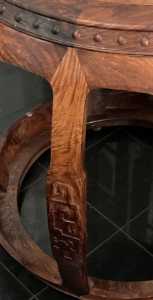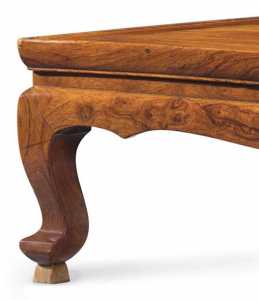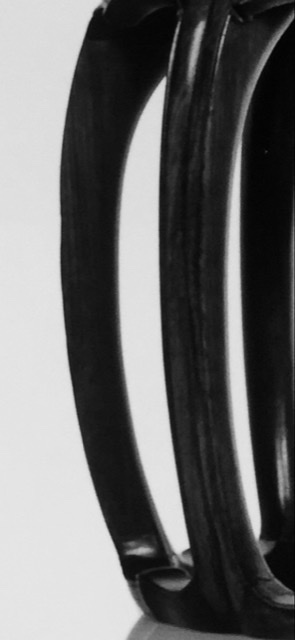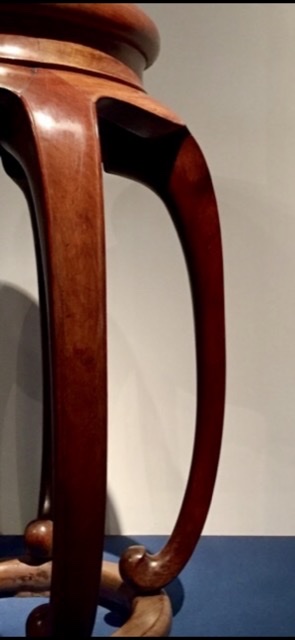The Chinese and Asian Art Forum. For Fans, Collectors and Dealers.
 Basic Rules For the BidAmount Asian Art Forum: Talk about whatever you want. You can even discuss and offer things that are for sale if they are authentic. Maximum image file size per post is 2 MB. Images of 700pxl x 700pxl are optimal if saved at a medium resolution. Be respectful of others and enjoy yourself. Click the YouTube link for a brief tutorial on using the forum. You can also EMBED Videos by cutting and pasting from You-Tube, Vimeo etc.
Basic Rules For the BidAmount Asian Art Forum: Talk about whatever you want. You can even discuss and offer things that are for sale if they are authentic. Maximum image file size per post is 2 MB. Images of 700pxl x 700pxl are optimal if saved at a medium resolution. Be respectful of others and enjoy yourself. Click the YouTube link for a brief tutorial on using the forum. You can also EMBED Videos by cutting and pasting from You-Tube, Vimeo etc.
NOTE: To post an item or add a new post, click open the category title from the FORUM LIST, and CLICK the Blue ADD TOPIC button.
@kirby13 Nice set of nesting table!
So, after a quick Google, ironwood is ‘Tieli mu’… seems I’ve only ever learned the Chinese name.
Now burl can be tricked to identify, but I’ve never seen nesting tables made from tielimu (ironwood), nor a burl version of tielimu.
Brett is pretty darn sharp on wood, so perhaps he’ll chime in on how he came to that description.
For me, these are very nice rosewood nesting tables (huali) with burl (probably also rosewood).
As I mentioned before, some rosewood has a strong grain and is easily confused with Huanghuali. But my table top is not burl, but rather it has a strong grain that other woods only achieves in burl form.
Compare the structural wood of your tables that lack a strong grain with that of my drum table that has the color and grain throughout.
Onvery old Huanghuali, the grain is sometimes obscured by the patina, but upon close inspection, you can still see the distinction.
Let me add….
Tielimu is generally a grey brown color with a very distinct straight grain, sometimes confused with jichimu (chicken wing wood) that has a similar color and distinct grain, but has zig zag grain like the way a chicken wing looks.
I have been staring at your stool daily since you first posted it.
How confident are you that the stool you posted is indeed Huanghuali and not burl wood?
Have you shown it to say Christies or Sotheby's for an opinion and or someone who deals specifically in Chinese wood furniture?
Perhaps if @Brettm pops in I would like to read his thoughts.
Mark
@imperialfinegems I ran it by an acquaintance regarding the drum form because I could not find drum tables, only drum stools/stands.
He is a well known author and museum curator, and world renowned expert on Chinese furniture.
No problem regarding wood identification. However, drum table are unknown in early designs, so a 20th c. piece.
Consequently, the piece is too modern for Christie’s (circa 1970) and I don’t have the import information to show it came into the USA before 2000.
This example (not mine) shows comparable grain and color, but is of the period… not a 20th c example like mine.
Just came across this. You might be interested.
https://doyle.com/auctions/21as03-asian-works-art/catalogue/93-chinese-hualimu-drum-table
A nice piece.
I was told by a Chinese furniture dealer that most “huali” furniture sold 1990 forward were actually made of African yellow sandalwood (African huali). Not sure if it’s true.
@william It will be interesting to see the results of this upcoming auction!
It is very similar in style to my table, but a few key differences that you may have noticed (setting aside wood type).
The most significant difference is the recessed plank top (vs. my table that the top planks are flush to the outer top frame.
I’m not sure exactly when Chinese furniture makers started putting a recessed space between the top frame and the top planks, but I believe that started post 1990’s.
Regarding greeno107’a piece, it’s a nice piece as well. I like it.
But don’t know how much you paid - knowing the price is what you pay and the value is what you get.
A few points (I could be wrong like anybody else…anyway it’s a forum for discussion and members will come to a consensus view): the top is not one piece of wood which is exceptional (a flag) for a stool; there are no trim on the edge of the legs, meaning the maker was sloppy and didnt do what he supposed to do; size seems bigger than any traditional stool. Also seems to me it’s African yellow sandalwood made in 90’s.
For Chinese furniture, the stool was designed for viewing not actual usage as most Chinese furnitures are square and rectangle shape. Nevertheless, I think this is a nice piece for visual pleasure.
@pactolus I had mentioned earlier (I think) that the drum form is not found as a table in early periods, only as stools. So, I agree with you that this design as a table is for aesthetic purposes, not functional, and 20th c.
But I’m not sure I agree that the absence of trim, which I believe you mean a beaded edge on the legs and/or table top, is indicative of the maker being sloppy. If I’ve misunderstood your meaning, please advise.
On my table, aside from the careful carving of the “nail heads” that would hold the drum top on, a stylized archaic dragon has been carved onto the center of the five supports. So, there seems to be no lack of skill to add subtle detail.
Furthermore, Ming pieces often lack any trim (beaded edged). Again, this table is more modern, but it’s design is based on Ming stools.
For comparison, here is a kang table that sold for $245,000 USD.
Beautiful! I was wondering about the relatively spindly proportion of the legs until I saw you refer to it later in the thread as a table. What are the dimensions?
Here is one of a pair of drum stools I have, which I've always assumed to be hongmu. One of the things I love about these stools (and round Chinese stools in general, I think) is their five-legged structure, somewhat counter-intuitive for our 20th/21st century minds, which tend to assume a circle divided into 6 segments to be the most natural.
Regards,
John
@greeno107 Just came across these and wasn't sure if you had encountered them in your researching: https://www.christies.com/lot/lot-5406298
@johnshoe Not specifically this pair, but I did look at a number of barrel form stools. Note the top is inset...there's about a 1/2" gap that was made between the round outer from and the inner pannel... an intentional recess in the top.
I've always thought that was a trait much later than 1900's, but this sale was held by the Interior Design department, not the Chinese department, so perhaps they were being generous in their description.
The sale price reflects the high dollar spending of wealthy patrons...I don't think I could get anywhere close to that price on my own for that pair of stools.
Thanks for visiting "The BidAmount Asian Art Forum | Chinese Art"
If you sell on eBay, or have a shop feel free to post images and descriptions and links.
Check back often for discussion about the latest news in the Chinese art and antique world. Also find out about the latest Asian art auctions at Sotheby's, Christie's, Bonhams and Tajans.
Auction results for: fine porcelain, ceramics, bronze, jade, textiles and scholar's objects. As well as Japanese, Thai, Vietnamese and other Asian cultures.
Thank you,
Peter Combs
Topics and categories on The BidAmount Asian Art Forum | Chinese Art
Kangxi vases, Kangxi dishes and chargers, Kangxi ritual pieces, Kangxi scholar's objects, Qianlong famille rose, Qianlong enamels, Qianlong period paintings, Qianlong Emporer's court, Fine porcelain of the Yongzheng period. Chinese imperial art, Ming porcelain including Jiajing, Wanli, Xuande, Chenghua as well as Ming jades and bronzes.
The BidAmount Asian Art Forum | Chinese Art
A free Asian art discussion board and Asian art message board for dealers and collectors of art and antiques from China, Japan, Korea, Thailand, Cambodia, Vietnam and the rest of Asia. Linked to all of the BidAmount Asian art reference areas, with videos from plcombs Asian Art and Bidamount on YouTube. Sign up also for the weekly BidAmount newsletter and catalogs of active eBay listing of Chinese porcelain, bronze, jades, robes, and paintings.
The art of calligraphy - and for the ancient Chinese it certainly was an art - aimed to demonstrate superior control and skill using brush and ink. Calligraphy established itself as one of the major Chinese art forms during the Han dynasty (206 BCE - 220 CE), and for two millennia after, all educated men were expected to be proficient at it.
The Museum’s collections of Asian art span nearly five millennia and encompass the cultures of China, the Himalayas, India, Japan, Korea, and Southeast Asia. In 2007, the Museum launched an initiative to create dedicated galleries for the collection, beginning with a gallery for the arts of Korea ...
Chinese art is full of symbolism, in that artists typically seek to depict some aspect of a totality of which they are intuitively aware.
China Online Museum is the finest online museum of Chinese art. It features Chinese calligraphy, painting, ceramics, bronzes, carving, and other artworks.
Chinese Ceramics & Works of Art. Overview Upcoming auctions Contacts Auction results ... Christie’s sales of Chinese ceramics and works of art showcase centuries of Chinese history. Held throughout the year in London, New York, Paris and Hong Kong, they attract a wide audience of collectors and connoisseurs vying for pieces as diverse as ...
Explore Asian Art Week. Contact the Specialist Department. Chinese Paintings ... Senior Specialist, Head of Sale. [email protected]. Tel:+1 212 641 5760. Bid in-person or online for the upcoming auction:Fine Chinese Paintings on 10 September 2019 at New York. Bid in-person or online for the upcoming auction:Fine Chinese Paintings on 10 ...
Discover an abundance of must-see art from all corners of a vast continent at Christie’s NY Asian Art Week. From contemporary classical and Chinese paintings to works with exemplary provenance from the Art Institute of Chicago, our Rockefeller Paza galleries will be full of ancient treasures and contemporary masterworks in a salute to the vibrant arts of Asia.
Sold to benefit The Art Institute of Chicago’s Asian Art Acquisition Fund, the sale features 84 lots with a focus on Ming and Qing porcelains, and offers a rare insight into the taste for collecting Chinese ceramics and works of art in the Midwest from the end of the 19th century through the 1980s. Highlights include two Wanli wucai garlic-head vases, a Qianlong mark and period, blue and ...
Specialist, Chinese Paintings, Christie's London Dr Malcolm McNeill is a Specialist in Chinese Paintings at Christie’s, based in London. He previously worked as an assistant curator of the Chinese collections and the Victoria and Albert Museum in London, as a researcher at the British Museum, and as a translator and tour guide at the National Palace Museum in Taipei.
The Christie's Education 2020 Conference: The Chinese Art Market 18 Jun 2019 Christie’s Education is delighted to announce our first international academic conference in Asia which will take place in Hong Kong from 26-27 November 2020 at the Hong Kong Convention and Exhibition Centre and will run in parallel with Christie’s Hong Kong Autumn Auctions.
The summer Chinese Art sale in Hong Kong will feature works of art from several private collections, including Qing porcelains and textile from the collection of the legendary Chinese art dealer A. W. Bahr (1877–1959), fine gilt bronze Buddhist sculptures from an old Hong Kong collection, an East Asian collection of Qing dynasty wine cups and jades, and a Japanese collection of Song ceramics ...
Sotheby's Chinese Works of Art Department holds two auctions each year in London, New York, Hong Kong and Paris.
Chinese Art - View Auction details, bid, buy and collect the various artworks at Sothebys Art Auction House.
With more than 340 Chinese works of art dating from the Neolithic to the Republic periods, highlights of this sale include a selection of Qing Imperial monochromes from the collection of Arnold and Blema Steinberg, early ceramics from the Art Institute of Chicago and Chinese porcelain and works of art from the collection of Henry Arnhold.
Results: Sotheby's Asia Week achieved $52.4 million in six strong auctions, exceeding pre-sale estimates. With 76.5% of lots sold and 60.3% of lots surpassing high estimates, the Asian art sales at Sotheby's indicate continued collector interest in the finest works of art from China, India and and the Himalayas.
Today's sale of Important Chinese Art will proceed as planned with sessions at 10 AM and 2 PM EDT. Sotheby's will be monitoring the weather conditions throughout the day and will be available to coordinate alternative bidding options should conditions make it difficult for clients to attend the auction in person.
Bonhams Chinese Art department is renowned for offering the finest works of art representing the richness and breadth of China's artistic heritage, particularly Imperial porcelain, white and spinach green jades, cloisonné and Buddhist art. Specialised international auctions are held globally, including London, Hong Kong and San Francisco.
Bonhams : Chinese Works of Art We use cookies to remember choices you make on functionality and personal features to enhance your experience to our site. By continuing to use our site you consent to the use of cookies. Please refer to our privacy and cookie policies for more information.
Bonhams Fine Art Auctioneers & Valuers: auctioneers of art, pictures, collectables and motor cars. We use cookies to remember choices you make on functionality and personal features to enhance your experience to our site. By continuing to use our site you consent to the use of cookies. ... Chinese Art (US) General enquiries
Bonhams : Fine Chinese Art We use cookies to remember choices you make on functionality and personal features to enhance your experience to our site. By continuing to use our site you consent to the use of cookies. Please refer to our privacy and cookie policies for more information.
Bonhams Fine Art Auctioneers & Valuers: auctioneers of art, pictures, collectables and motor cars Bonhams : Asian Art We use cookies to remember choices you make on functionality and personal features to enhance your experience to our site.
Bonhams are international auctioneers of fine Chinese and Japanese art. We specialise in rare Imperial and Export Chinese ceramics and works of art, as well as Japanese ceramics, fine and decorative works of art from the Neolithic Period to the 20th century. View on map
Bonhams Fine Art Auctioneers & Valuers: auctioneers of art, pictures, collectables and motor cars. We use cookies to remember choices you make on functionality and personal features to enhance your experience to our site. By continuing to use our site you consent to the use of cookies. ... Asian Art Bonhams. Work. 22 Queen St.




